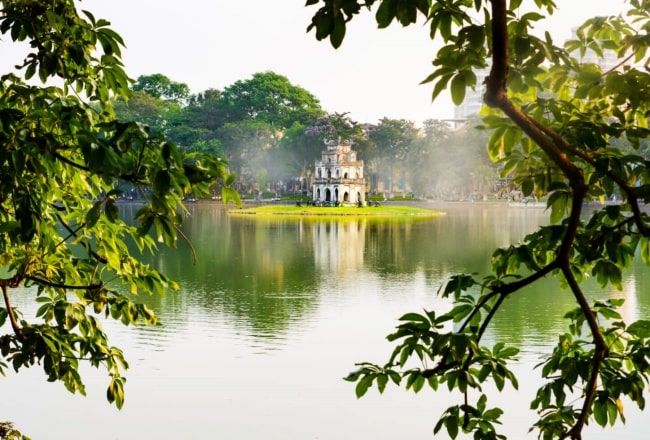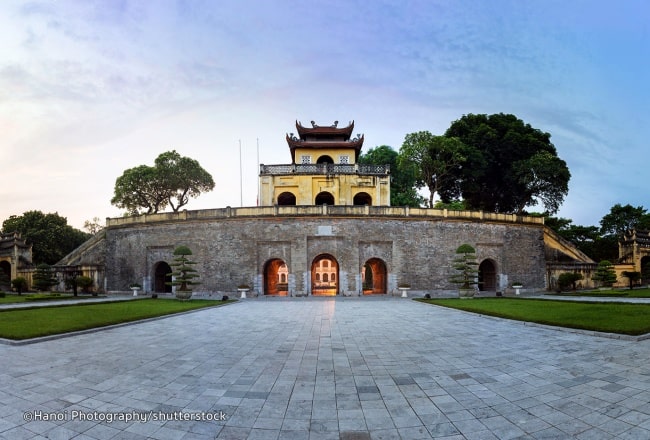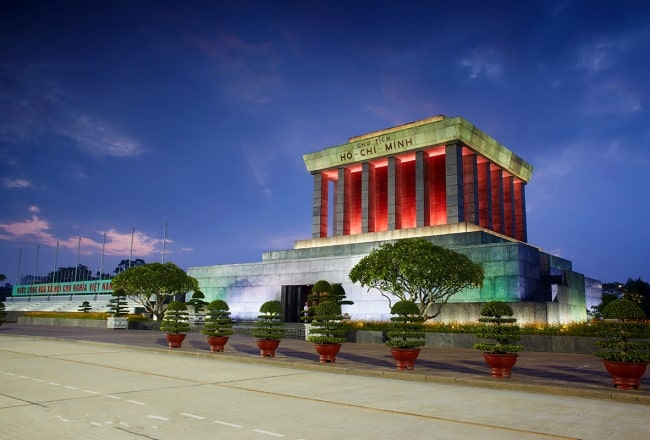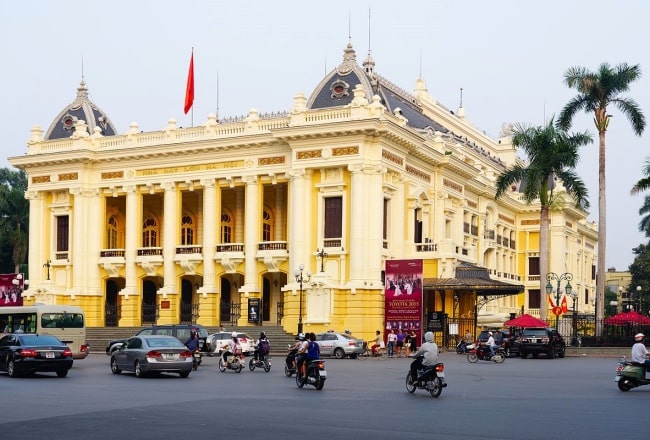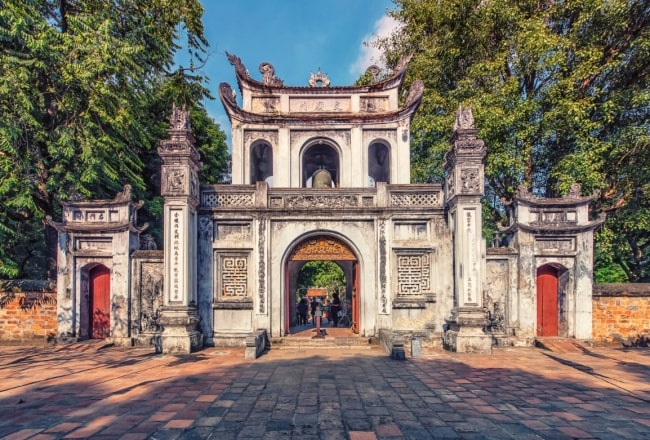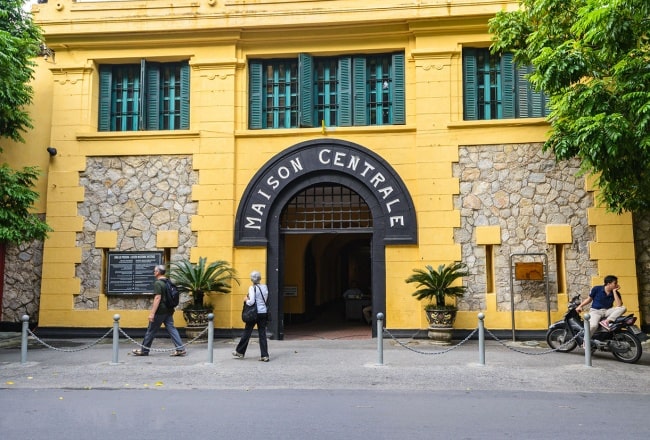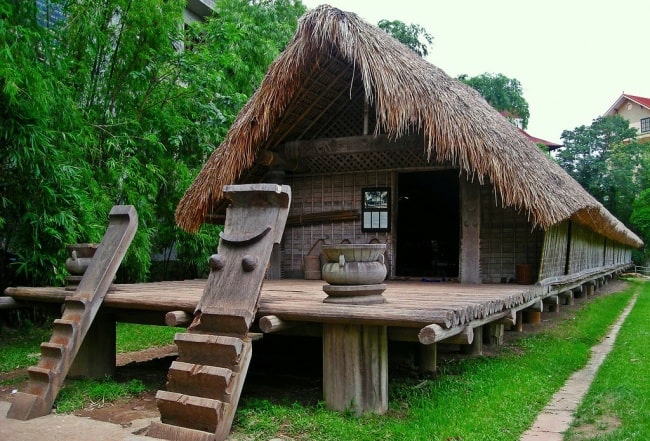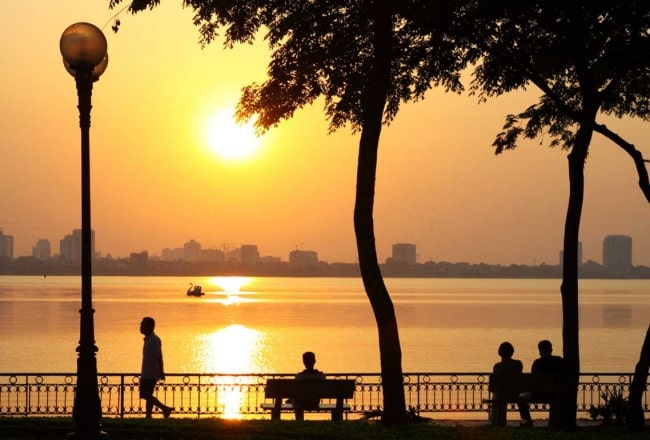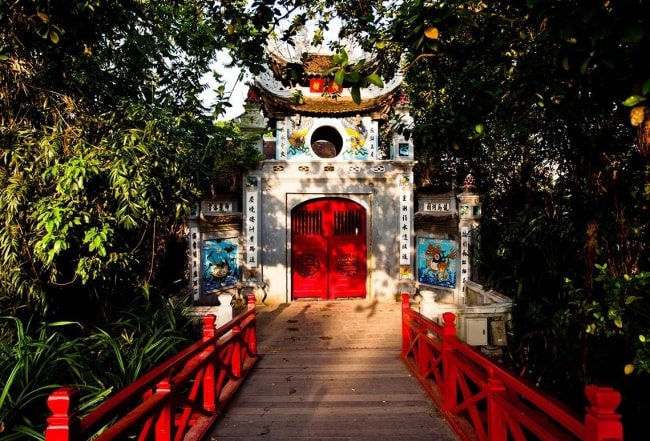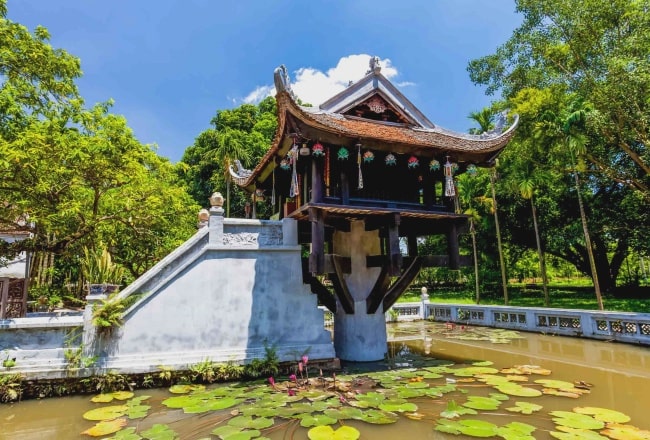Hanoi Weather Overview
Hanoi weather is characterized as a subtropical climate with high humidity with four seasons: spring, summer, autumn and winter with two main season: dry and wet.
In wet season which is also summer, lasting from May to September, Hanoi receive rich and high temperature solar radiation while also is influenced by the ocean climate, making Hanoi to have high humidity and heavy rainfall.
During this season, the temperature can reach up to 40 degree Celsius and the rains can flood the streets but flooding happen not so often like in Ho Chi Minh city. In the hottest days (June-July), high temperature can remain until midnight. However, with the use of air-con in almost every building, you can always escape the heat.
The dry season lasts from December to around February, bringing a totally different weather patterns to the city. Temperature can drop low to 10 degree Celsius which can be a lot worse than you expect due to these factors: wind chill, humidity and lack of building insulation. Unlike in summer you can escape the heat easily, it’s almost futile to get away from the cold in winter.
However, rainfall in winter is much lesser than in summer, resulting in much safer weather to travel to higher areas.
Please check the below table to have the general idea of Hanoi weather throughout the year:
| Month | Avg. High (°C) | Avg. Mean (°C) | Avg. Low (°C) |
|---|---|---|---|
| Jan | 20.1 | 16.8 | 13.7 |
| Feb | 21.1 | 18.7 | 16.3 |
| Mar | 24.2 | 21.7 | 19.4 |
| Apr | 28.1 | 24.9 | 22.1 |
| May | 33.6 | 29.1 | 25.3 |
| Jun | 34.2 | 30 | 26.3 |
| Jul | 33 | 29.2 | 26 |
| Aug | 32.8 | 29 | 25.9 |
| Sep | 31.3 | 27.8 | 24.9 |
| Oct | 30.3 | 26.2 | 22.8 |
| Nov | 26.4 | 23.3 | 20.4 |
| Dec | 20.7 | 17.6 | 14.4 |
Best time to go to Hanoi
Spring from February to April and autumn from October-November is the best time to visit the city. Hanoi has a humid subtropical climate with lots of precipitation that is common in northern Vietnam. It means that the summers are scorching, coupled with rainfall and high humidity.
Hanoi’s summer months are also its monsoon months. Winters, on the other hand, are cold and dry. Try to plan your trip around Dong Nhan Temple Festival, Mid-Autumn Festival and Liberation day when things are bright and festive all around the city. However, one can experience the true cultural fiesta during the Tet festival and Co Loa festival in the month of February to get a taste of authentic Hanoi style.
However, a word of caution! Hanoi’s weather can get unpredictable, especially with the growing influence of Global warming. The weather can change anytime, yet there is an overall generalised understanding of its climatic conditions that can be kept in mind while travelling.
Seasonal Weather Guide
Hanoi in Peak Season
The spring season, from February to April along with the fall season from October to November are considered to be the peak seasons and also the best time to visit Hanoi.
From February to April the city is not too hot and exploring the many beautiful tourist sites of the city can be undertaken with ease. By the end of February, the chill is beginning to give way to a mild, pleasant dry climate. The average temperature ranges from 15-20 degrees Celsius, and it is also the perfect time for the fields and plants to blossom, giving way to beautiful rural and natural landscapes.
Locals and tourists alike, wait for October. The constant rains during the summer months of May-September give way to one of the best seasons to travel to Hanoi. The average temperature is about 25 degrees, and the cold air and warm sun make for the ideal weather — the landscape changes to hues of yellow and golden that are splendidly scattered throughout the terrain. The fall also brings with it, bright blue skies.
Hanoi in Off Season
The summer months from May-September, which are also the official monsoon months of Hanoi and the winter months from December-January, are considered off seasons for tourists. The summers are scorching with temperatures hovering around 33 degrees. Heavy rains are frequent during the summers, which may range from slight drizzles to thunderstorms. Due to the high humidity accompanied by the precipitation, the summers are not the best time to venture into the outdoors. However, it is an excellent time to stay in the air-conditioned malls, enrol in cooking classes or jump into the swimming pool.
The winter months of December and January witness temperature dropping to 10 degrees Celsius. The winter temperatures give way to sunny, warm weather that one relates to many Southeast Asian cities.
Hanoi is different in that sense because its winters can get cold. With high humidity and windy conditions, the cold only increases. The day temperature may max out at 20 degrees and getting outdoors with warm clothing is a must. Compared to summers, winters are far more manageable and do see an influx of more tourists in comparison. The winter holiday season is a busy time and making bookings in advance is advisable.
Hanoi in Spring (February – April)
Weather
Cold temperatures and slight precipitation are the main highlights of the spring season of Hanoi. The temperatures begin to rise in February after a cold January. In February the temperature is around 18 degrees Celsius with clear skies, though the humidity may reach to 70%. March and April are the best months to visit Hanoi, with temperatures ranging between 20-24 degrees. The blue skies, as well as the mild temperature, are perfect for exploring Hanoi’s many attractions by foot too. Visit the Hoan Kiem Lake or the One Pillar Pagoda, besides whetting the appetite on some of the most sumptuous foods of Hanoi, such as Pho, Bun Cha and Xoi.
Festivals in Spring
Springtime is also Hanoi’s festival time. The city hosts many festivals and celebrations, the most important one being the Tet Festival. The Tet Nguyen Dan festival, called fondly as Tet festival, takes place usually during the end of January or early-mid February. The city is in frenzied favour with colourful cultural outpourings.
The streets are decorated and lit up and the locals are in their best dresses. There are also special celebrations by various hotels and resorts. However, the Tet holidays could also mean that most of the accommodations and modes of travel are booked out and some attractions, such as a few museums and shops may remain closed. Tet is the best time to witness the cultural intricacies of the nation that is in the mood of celebrations.
The Co Loa Festival in February takes place in the Co Loa Citadel and is known for wrestling and crossbow shootings, whereas, the Dong Festival in March in the Gia Lam district in Hanoi has special martial arts performances by famous masters. Another popular festival, the Le Mat Festival is usually celebrated in March and takes place in the Le Mat Village in the Hanoi district. The Keo Pagoda Festival is held in spring and autumn and celebrated with palanquin procession, swimming race and traditional dances.
Hanoi in Summer/Monsoon (May-September)
Weather
The summer and monsoon seasons of Hanoi are hot, oppressive, and wet. There are thunderstorms and slight drizzles which continue for long hours. This makes it even more difficult to venture out and explore the city landscapes. May, however, is still not too hot as compared to the other summer months. The temperature in May is around 28 degrees Celsius, and the skies are still relatively clear.
However, with the onset of June, the summer begins in full force, with temperatures ranging from 29-33 degree Celsius. The highest temperatures in summer could also touch 40 degrees. June is usually the hottest month and also the month when the rainfall starts. July and August see the maximum rainfall that is usually as high as 200mm and more.
The average temperature in July and August averages around 29 degrees. In September there is a slight fall in temperature averaging at 27 degrees and rainfall dips to a little more than 150mm. However, throughout the summer months, the humidity remains high crossing 75%. The high temperatures coupled with rain are the main reasons why the summers are considered Hanoi’s offseason. However, this means that the tariffs are less and accommodations and bookings easier and more affordable.
Tips for Travellers
Armed with a raincoat and umbrella, one can catch a few hours of outdoors sunshine, yet the unpredictable climate can make planning sightseeing tours go off in minutes. However, there are plenty of indoor activities to keep one busy in Hanoi too. Enrol in a cooking class or watch the rain drizzle from the window of a café while reading your favourite book. Besides, there are also a few festivals during the monsoon and summer months that can excite travellers to take the sweaty plunge.
Festivals in Summer
The Chem Temple Festival in June which involves a water procession which consists of Dragon boats, the bullfighting festival of Do son Buffalo in August and the Dong Nhan Temple Festival are some of the monsoon festivals of the city.
However, the most popular festival of this season is the fun-filled Mid-Autumn Festival celebrated in September. The lakes of Hanoi are especially beautified and thronged by locals and tourists, as lanterns soar to the sky and puppet shows, lion dances and exciting food stalls get crowded on the ground.
Hanoi in Fall (October-November)
Weather
The most visited months of Hanoi- October and November - have glorious weather and clear skies. The temperatures range from 24-27 degrees in the fall season with rainfall less than 100mm and clear blue skies. Although leaves wither in some parts, there are a different variety of flowers that bloom in Fall.
It is also the best time to venture out and explore the surrounding destinations of Hanoi. Visit the various city attractions, such as the Vietnam Museum of Ethnology, Ho Chi Minh Mausoleum, the West Lake, Hoa Lo Prison Memorial, Temple of Jade Mountain or Dong Xuan Market.
Shop at its many local shopping centres or dine at the popular restaurants. Better stroll along the hawker crowded streets of Old Quarter to discover the city’s past. Or enjoy the delicious platter of street food, hopping from one stall to another. The mild weather is the perfect way to explore the outdoors, shop and gobble the street food without caring much about the heat, sweat, rain or chill. There are also many events and festivals to look forward to in autumn.
The Liberation Day is celebrated on 10th October, the day when in 1954 Hanoi was liberated after the Battle of Dien Bien Phu. The Keo Pagoda Festival is held usually in October at the pagoda in the Thai Binh province with boat races, drum and trumpet competitions.
Hanoi in Winter (December-January)
It does get freezing during winter in Hanoi. Warm clothes, jackets are an essential part of the wardrobe if one wants to move out. The temperatures average at 17 degrees but can drop to less than 10 degrees too.
The low temperatures are further accompanied by winds and high humidity making it feel much colder than the actual temperatures. Also, many buildings lack heating and insulation. There is hardly any rainfall with the average precipitation less than 50mm. The skies are usually cloudy and the weather - foggy. The holiday season coupled with events and festivals is a reason enough to vacation in Hanoi during winters. It is also the time to enjoy the warm street foods while chilling in the cold.
A cup of hot coffee with noodles is just the right thing for a chilly evening. Pay a visit to the Hanoi Cathedral on Christmas Eve or shop at the Christmas market in Old Quarters. You can look forward to the Annual Flower Festival that takes place in the last week of December. The Tet Festival may fall at the end of January, depending on the dates of the lunar calendar. Thus, it is best to check the dates of the festival beforehand.


